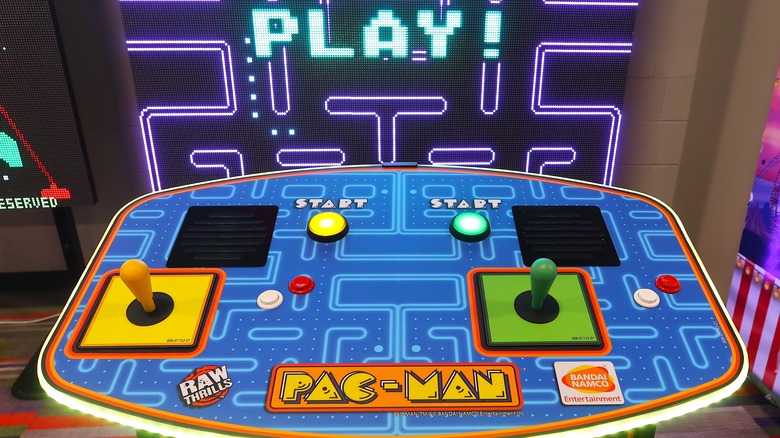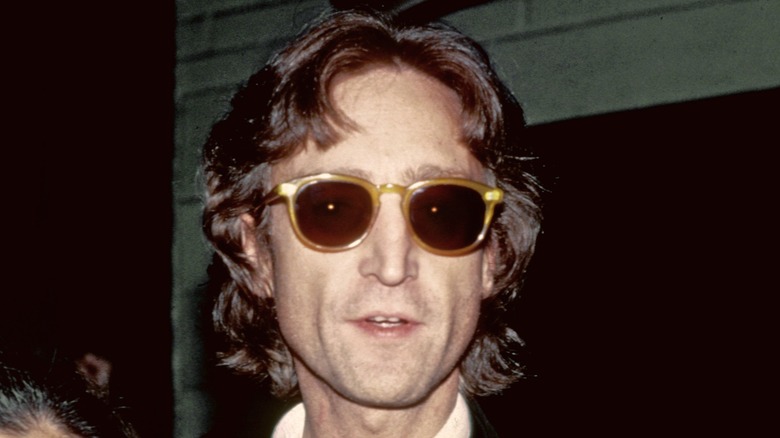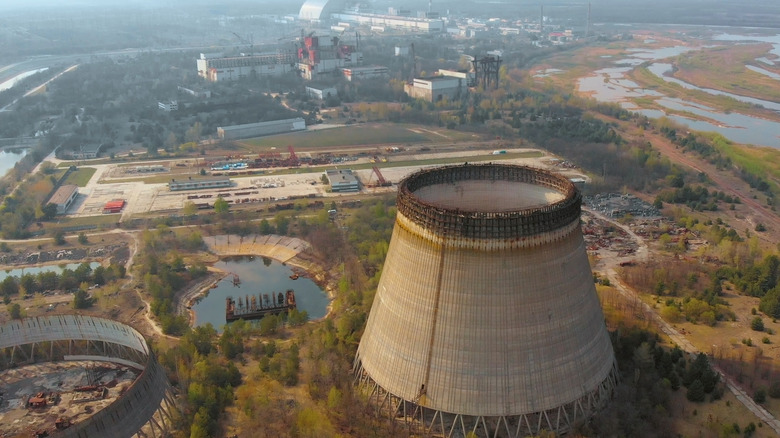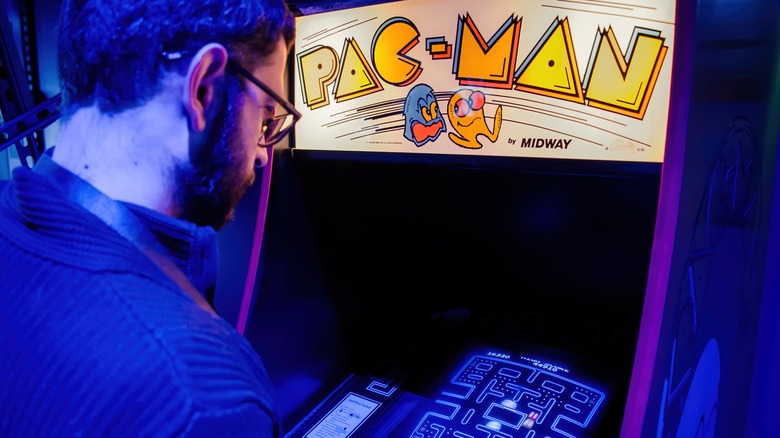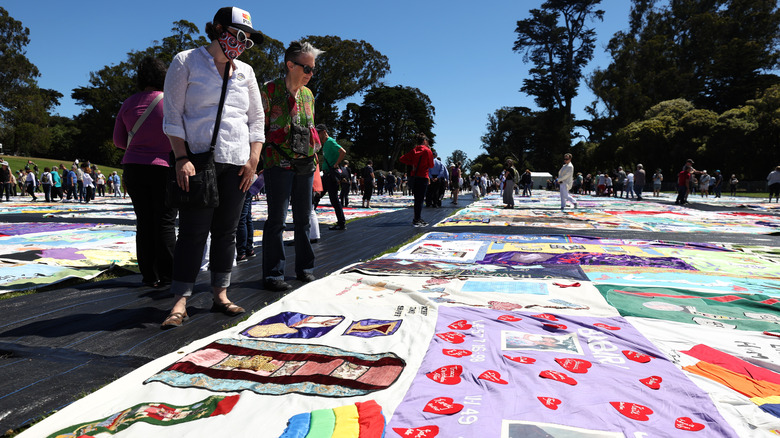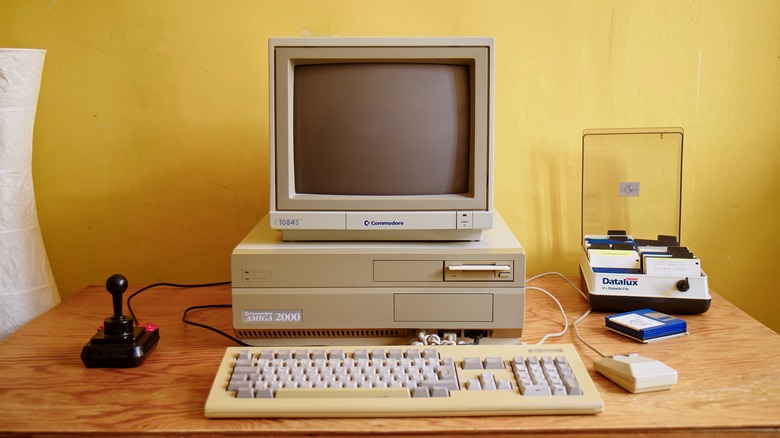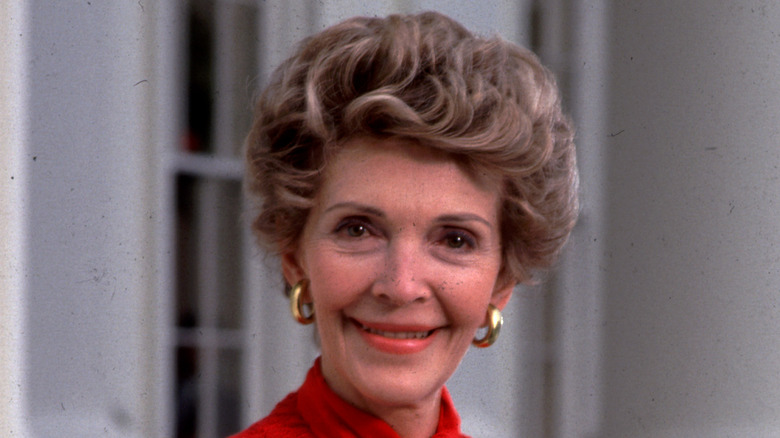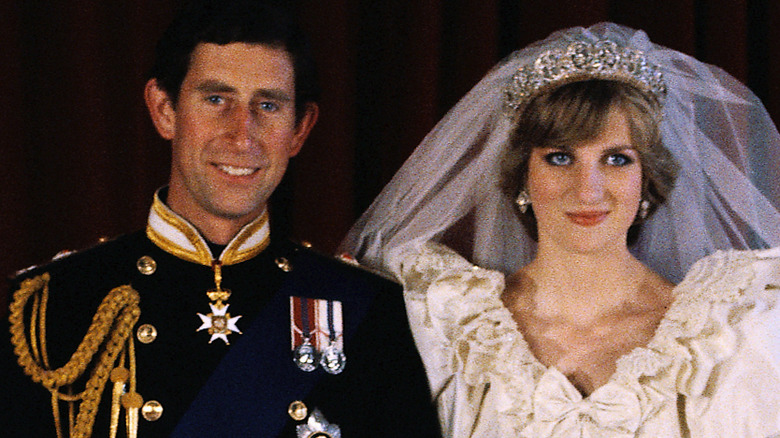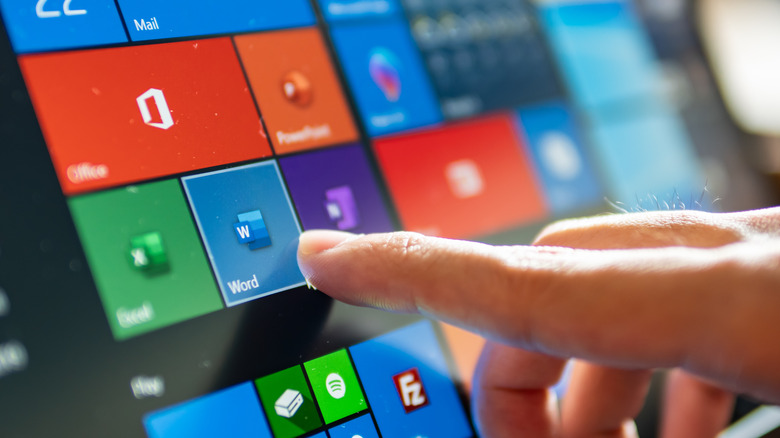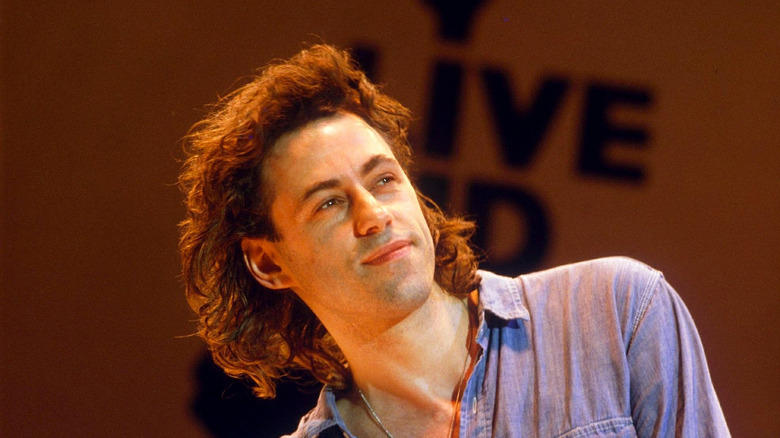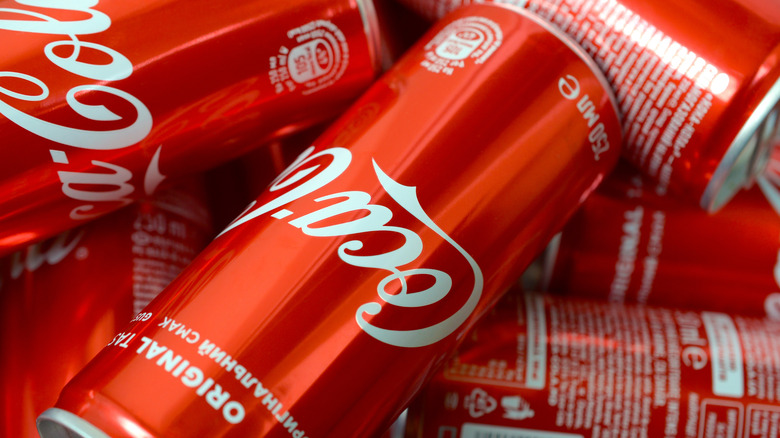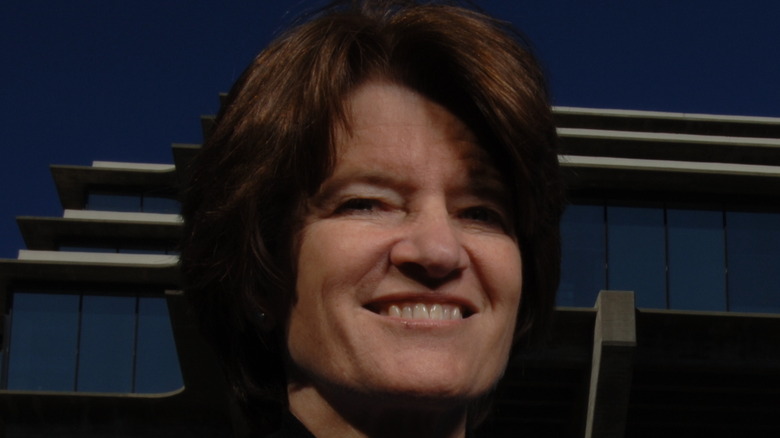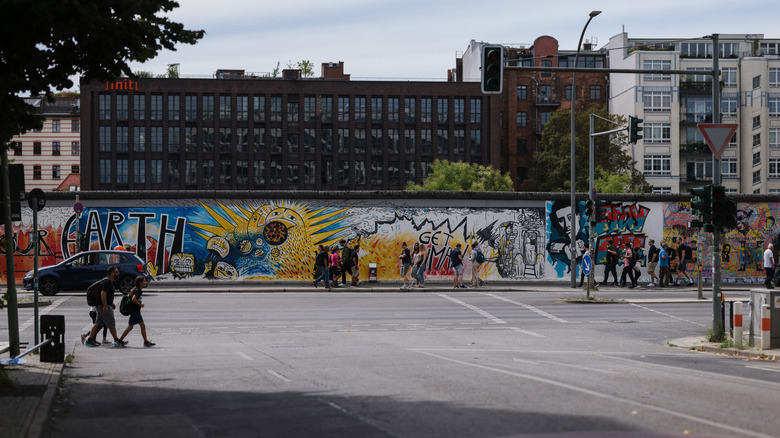Big Moments From The 1980s You Forgot About
You might have been a kid during the 1980s, playing video games all day long and experimenting with a new thing called a computer — imagine the thrill of clicking on the world's first drop-down menu. Or you might be born one minute too late to do all of those. Nevertheless, the 1980s influenced the lives people live today.
The decade was a relatively peaceful time that let science and technology develop and start moving from the academic sector into people's homes. But the 1980s also brought huge historical milestones around the world, both good and tragic. As History notes, the '80s was both marked by socio-ecomonic conservatism, while also being known as a decade of excess, as per Desert News.
Let's look at some of the biggest moments from the 1980s then.
John Lennon is murdered
On December 8, 1980, John Lennon and his wife, Yoko Ono, gave an interview to RKO Radio from their New York apartment (via All That's Interesting). John Lennon said, "When we were kids, 30 was death, right? I'm 40 now and ... I feel better than before ... I consider that my work won't be finished until I'm dead and buried and I hope that's a long, long time." A few hours later, he gave an autograph to a young fan named Mark David Chapman. At 10:50 p.m. that day, Chapman fatally shot the Beatles' frontman in front of his wife, just feet away from his home.
This was not just an immense shock to Ono and the couple's 5-year-old son, Sean Lennon, but to the whole world who had known John Lennon as a Beatle, a great musician, and a prominent peace activist. How could this be the brutal end to the life of a person admired by so many? Apparently, this is exactly what bothered Chapman. In 2020, during a parole hearing, Chapman said John Lennon "was very, very, very famous and that's the only reason and I was very, very, very, very much seeking self-glory, very selfish" (via New York Post). As of 2022, Chapman is still in prison, denied parole for the 12th time, as per CNN. But John Lennon's sudden and senseless death still wells up his friends — Paul McCartney's performance of "Here Today," a song written for his former bandmate, stands as proof.
The Chernobyl disaster
In the late hours of April 25, 1986, Chernobyl operators began a routine safety check. As History reports, Viktor Brukhanov, the director of the nuclear power plant, didn't even show up to supervise — he was expecting a promotion to Moscow and was busy cutting corners to meet the required quotas. There was another problem: The majority test fell into the hands of the night shift, who had zero prior experience and/or instructions, as per a timeline of events from History.
Reactor No. 4's power was reduced during a shutdown to test the plant's turbines. But when power plummeted way below the stable level, the night shift panicked. They removed almost all control rods, but it was too late — xenon had accumulated in the core. A little after 1 a.m. the next day, a series of explosions blew the 1,000-ton roof off the reactor. The radiation released was 400 times higher than that at Hiroshima. And yet, as news of the disaster climbed up the Soviet Union's ladder, the leadership hid the gravity from the population and refused to evacuate the site until a couple of days later. The United Nations estimates that under 50 people were directly killed by the radiation, but around 9,000 would die of cancer resulting from the disaster. In 1995, the Ukrainian government estimated the total number of deaths at 125,000.
The overwhelming human error and Soviet secrecy contributed to the fall of the Soviet Union. As per Mikhail Gorbachev himself: "[Chernobyl] was perhaps the real cause of the collapse of the Soviet Union five years later."
Pac-Man is released
In May 1980, game designer Toru Iwatani introduced Japan to a brand new game called "Puck-Man" (via ThoughtCo.). It featured a simplified pizza-like character eating its way to victory and avoiding ghosts in the process. Ever wonder about the food theme? It's original name is a play on "puck-puck," which is a Japanese word to evoke the idea of munching food. In October that year, "Puck-Man" made its way to the United States, and its name was changed to "Pac-Man" so as to avoid obscene remarks.
As Pac-Man's official website states, the game was an instant hit in the U.S.: Within a year, over 100,000 machines were sold, with, according to ThoughtCo., 250 million games played each week in 1981. Throughout the 1980s, several versions of the game were released — Ms. Pac-Man, Super Pac-Man, and Junior Pac-Man, just to name a few.
Pac-Man took the world by storm with its simplicity and playfulness. Iwatani confessed his creation was in fact an antidote to the myriad of violent video games at the time. Indeed, Pac-Man is peaceful, humorous, and fun to play. No wonder it's still popular today, as per the official website.
AIDS is identified
As per WebMD, it was 1981 when unusual illness reports started piling up in the U.S. Kaposi's sarcoma and a rare type of pneumonia were claiming the lives of otherwise healthy young men. Because most of the victims were gay men, the Centers for Disease Control and Prevention (CDC) named the disease GRID, or gay-related immunodeficiency (via Healthline). Within two years, the CDC had a clearer understanding of the disease. AIDS, or acquired immune deficiency syndrome, affected gay men as well as people who injected drugs and who received contaminated blood transfusions. Scientists soon discoverd the virus that caused was HIV, or the human immunodeficiency virus, which is believed to have spread from chimpanzees to humans around the 1930s. By the 1970s, an epidemic had started in the U.S.
The early '80s marked the start of a long, complex development for the treatment of AIDS. As WebMD reports, in 1987, azidothymidine (AZT) became available to the public — this is a failed cancer drug from the 1960s that can block enzymes and stops HIV from replicating itself and spreading further. But its prohibitive price and side effects led to the development of other, better antiretrovirals. By 1996, a combination of AZT and other antiretrovirals became the norm for the treatment of AIDS and the beginning of the end for the terrible pandemic.
Time Magazine names The Computer as the Man of the Year
On January 3, 1983, Time Magazine changed its usual "Man of the Year" title to "Machine of the Year" and showed a computer on its cover. As per Wired, Time had already selected their strange "Man of the Year" a week before, in December 1982. Either way, this was the beginning of a new age, and Time knew it. They quoted people's enthusiasm about computers at the time — in 1982, 80% of Americans said "in the fairly near future, home computers will be as commonplace as television sets or dishwashers."
Of course, computers were already promising to become a valuable member of modern families. Thanks to the innovative silicon chip, computers had finally become small enough to fit into a home. And in 1980 alone, Time noted more than 700,000 personal computers were sold in the U.S. According to Statista, in 2021, around 342 million PCs were sold around the globe. However, this doesn't include the estimated 277 million laptops and the 160 million tablets. Clearly, Time Magazine was right in writing arguing that sometimes it's worthy to highlight and take notice of something other than a person, especially if that new development has the potential to change society and how it functions, as per Wired.
The Just Say No campaign
During the mid-1980s, President Ronald Reagan and first lady Nancy Reagan reinstated Richard Nixon's War on Drugs after cocaine addiction skyrocketed in the U.S., as per History. The development of crack cocaine (a cheaper, more addictive form of the drug) saw four times as many drug-related emergency room visits between 1984 and 1987. So Nancy Reagan set out to lead a campaign called "Just Say No," while the president signed the Anti-Drug Abuse Act, with upwards of $1.7 billion to be spent on fighting substance abuse. Nancy Reagan traveled across the U.S., encouraging children to simply steer clear of drugs and raising public concern about the crack epidemic.
But according to the Guardian, the "Just Say No" campaign failed for a number of reasons. On the one hand, the message was too simplistic and the discourse was the same for alcohol, marijuana, and crystal meth — today, it's known they're not equally destructive. On the other hand, the alarmist discourse did nothing to curb the numbers. Crack cocaine might be largely a thing of the past, but as the CDC reports, since 1999, more than 900,000 people have died as a result of a drug overdose in the U.S.
If you or anyone you know is struggling with addiction issues, help is available. Visit the Substance Abuse and Mental Health Services Administration website or contact SAMHSA's National Helpline at 1-800-662-HELP (4357).
Princess Diana and Prince Charles' Wedding
On July 29, 1981, Diana Spencer became the first British citizen to marry an heir to the throne since 1660, as Smithsonian reports. The 3,500-guest wedding was a huge phenomenon, and thousands of people came to see the two as the perfect couple, or at least an honest love story, unaffected by royalty rules. In fact, it was quite the opposite: Diana and Charles had met a mere 13 times before their wedding, and Diana was the choice of Charles' family — not Charles.
According to Vanity Fair, Prince (now King) Charles' true love was and is Camilla Parker Bowles — the two met in 1970, long before Diana entered the royal circle. It was love at first sight, and the two were in a happy relationship for a few years — but being the heir to the British throne comes at a price, and the two were forced to break up. Both of them remarried, but even during his marriage to Princess Diana, Charles continued to see Parker Bowles. In the mid-1990s, both couples divorced, and Charles and Camilla could finally be together. The couple later married on April 9, 2005.
Microsoft Word is released
What would life be without Microsoft Word? Well, it might be shocking to acknowledge that, not so long ago, there were no word-processing programs. In 1982, WordPerfect and WordStar came out, as per Britannica, but the following year, Microsoft released a slightly better program: Word 1.0 or Multi-Tool Word. According to Core, it was the creation of former Xerox programmers, Charles Simonyi and Richard Brodie. Microsoft founders Bill Gates and Paul Allen had hired the two to create an advanced word-processing program that ran on the UNIX operating system (later, it would run on MS-DOS, too, notes Britannica).
Before anything else, Word was a WYSIWYG (what you see is what you get) program, which meant that the document on screen would look just like its printed version. WordStar had the same feature, but Word introduced styles (italic, bold, and underlined) on-screen and several windows for editing multiple documents. In 1985, Word 2.0 also added spellcheck and word count. By 1993, Core reports that Word 6.0 was operating on DOS, Windows, and Macintosh — this is how, slowly but surely, Word became the world's go-to word-processing program. Today, it runs on more than a billion devices.
Band Aid/Live Aid
As per Smooth Radio, in 1983, a series of TV broadcasts on the Ethiopia famine were shown in the United Kingdom. Musician Bob Geldof and his then-wife Paula Yates were among the ones watching –- they were heartbroken but determined to do something about it. Soon enough, Geldof met with fellow musician Midge Ure and put together a supergroup called Band Aid. By Christmas 1984, Sting, Bono, George Michael, Phil Collins, and several other world-famous musicians came together to record the first benefit song, "Do They Know It's Christmas?" The song was a huge hit (and a fundraising success, raising millions). So the following year, Geldof assembled Live Aid.
Live Aid was a huge concert that took place at London's Wembley Stadium and several other big arenas around the world on July 13, 1985 (via History). More big names appeared: Mick Jagger, Elton John, Eric Clapton, David Bowie, and Queen (who gave one of their most famous performances then) included. The event ended up raising $127 million. It also raised enough awareness for several Western countries to donate to Africa as well. As a result, Queen Elizabeth II knighted Geldof. In 2005, Geldof also organized Live 8, a charity concert to raise awareness around global poverty.
New Coke
Coca-Cola has famously kept its original recipe a secret since 1886. And incredibly enough, its popularity never seemed to falter. But in the 1980s, Coca-Cola was feeling increasingly pressured by the Pepsi-Cola company. As History reports, the "Pepsi Challenge" invited consumers to take blind taste tests and proved they preferred Pepsi. When Coca-Cola conducted the same test internally, they got the same disheartening result. So in 1985, Coca-Cola made a bold move and introduced its "New Coke."
Coca-Cola CEO Roberto Goizueta claimed the new recipe would be "smoother, rounder, yet bolder — a more harmonious flavor." But "New Coke" was just trying to copy Pepsi. The day "New Coke" was announced, Coca-Cola shares plummeted on the New York Stock Exchange, and Pepsi gave all its employees a day off. They wrote, "After 87 years of going at it eyeball to eyeball, the other guy just blinked.” Within two months, Coca-Cola was receiving 8,000 angry calls each day — customers wanted the old recipe back. As per Coca-Cola's official website, on July 11, the original recipe was back. "New Coke" only lasted 79 days. Goizueta said, "We set out to change the dynamics of sugar colas in the United States, and we did exactly that — albeit not in the way we had planned."
Sally Ride
For centuries, women lived in a world that didn't allow them to follow their dreams — universities and political institutions only opened their doors to men. According to History Collection, Columbia University only started allowing female students in 1983. And, perhaps even more infuriatingly, until the 1970s, U.S. women couldn't obtain a divorce over domestic violence. But by the 1980s, feminism had gained enough momentum to actually have an effect on male-centered institutions (via Vox).
On June 18, 1983, as Space reports, Sally Ride became the first female American astronaut to go into space. Two decades earlier, Soviet astronaut Valentina Tereshkova had become the first woman in space (via Royal Museum Greenwich). Ride began training with NASA in 1978 and worked in the ground-support crew until her 1983 mission aboard the space shuttle Challenger. As per NASA, Ride used the shuttle's robotic arm to put satellites into space. She repeated the mission in 1984, then after 1987, she quit NASA and started teaching physics at the University of California in San Diego. As per Britannica, she also led several organizations dedicated to schoolgirls with a passion for science, math, and technology. Ride was a staple of determination and feminism until her death in 2012.
The Berlin Wall falls
As BBC explains, after World War II, Berlin was divided: the British, French and American zones made up West Berlin, and the Soviet Union took over the east. After thousands of East Berliners were going West, the Soviets erected a huge wall that divided East Berlin from its western part. East Berlin — just like the whole Eastern bloc — lived in extreme poverty. By 1989, people were protesting in Poland, Hungary, and the Baltic countries. In August, Hungary opened its borders to Austria in the west, allowing East Germans to escape.
On October 9, some 70,000 Germans also protested for their freedom. By the end of the month, half a million people were requesting a democracy. On November 9, an East German spokesperson, Günter Schabowski, was supposed to announce an ease in travel restrictions. But this is what he said: "Private travel outside the country can now be applied for without prerequisites." When virtually every Berliner headed to the barrier, border guard Harald Jäger ordered for the border to be lifted, afraid of what would happen if he didn't.
The decade ended with thousands of families crying as they reunited for the first time in decades. By Christmas 1989, Romanian demonstrators overthrew their communist government (but not before over 1,000 people were killed), and by 1991, the Soviet Union collapsed, guided by Mikhail Gorbachev. The fall of the Berlin Wall marked a new beginning for Europe.
